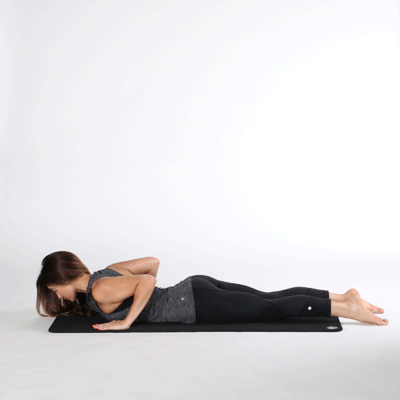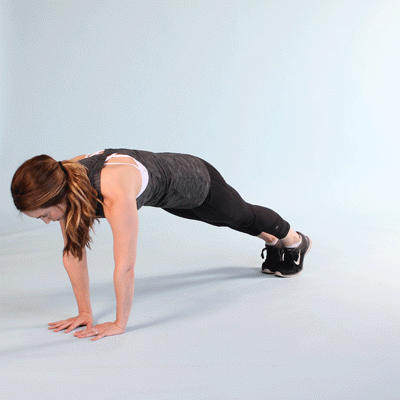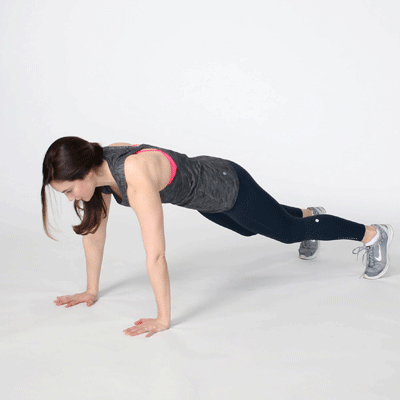We include products we think are useful for our readers. If you buy through links on this page, we may earn a small commission. Here’s our process.
Healthline only shows you brands and products that we stand behind.
Our team thoroughly researches and evaluates the recommendations we make on our site. To establish that the product manufacturers addressed safety and efficacy standards, we:- Evaluate ingredients and composition: Do they have the potential to cause harm?
- Fact-check all health claims: Do they align with the current body of scientific evidence?
- Assess the brand: Does it operate with integrity and adhere to industry best practices?
Chest exercises may help increase the mass of and strengthen your pectoral muscles.
Boobs. Do you wish yours were bigger? Perkier? Firmer?
While the only sure-fire way to make this happen is to go under the knife — or invest in a seriously good push-up bra — you can strength train your chest muscles to increase their mass, which will in turn make your whole chest look fuller.
Below, we’ve curated 13 chest exercises done with and without equipment to firm up your pectorals and help your top half appear perkier. Try a combination of these a few times a week to feel more va-va-voluptuous than ever before.
A great warmup to your chest exercises, cobra pose will activate those muscles.
To get moving:
- Start by lying on your stomach with your legs extended and the tops of your feet resting on the floor.
- Place your hands directly under your shoulders with your elbows tucked in.
- Begin to lift your head and chest off the ground while drawing your shoulders back and keeping your neck neutral. Straighten your arms as much as is comfortable.
- Hold the pose for 30 seconds and return to the start. Repeat three times.
We know how beneficial planks are for you. Add dynamic movement to that, and they’re even better. Really focus on your chest muscles while engaged in this exercise.
To get moving:
- Start in a plank position with your head and neck neutral and your hands stacked under your shoulders. Make sure that your lower back isn’t sagging.
- Keeping your core tight, lift your right hand and right foot off the ground, and “step” a foot to the right. This is one rep.
- Pause for a second, reset, and move another foot to the right. Complete 10 “steps” to the right, then switch sides, and make your way back to the starting point, stepping with your left hand and left foot.
- Repeat three sets.
One of the best whole-body bodyweight exercises you can do, pushups also target those pectoral muscles in a very deliberate way. If a standard pushup is too challenging, try dropping to your knees.
To get moving:
- Start in a plank position with your hands placed slightly wider than your shoulders, your head and neck neutral, and your core tight.
- Bend your elbows and start to lower yourself down until your chest comes as close to the floor as you can get it. Make sure your elbows aren’t bowed out at a 90-degree angle; they should be tucked closer into your body.
- Start to extend your arms and return to the starting position. Complete three sets of as many reps as you can.
Another variation on the traditional plank, the plank reach-under has you alternating on a single arm throughout for a greater challenge.
To get moving:
- Start in a plank position with your hands under your shoulders, your back neutral, and your core tight.
- Maintain the plank position and, starting with your right arm, lift your hand off the ground and touch your left knee.
- Return to the plank position. Repeat 10 reps with your right arm, then switch to your left arm, and complete 10 reps. This is one set.
- Complete three sets.
Although the bench press is a traditional chest exercise, using dumbbells allows for a greater range of motion. This offers even more bang for your buck. Start with moderate-weight dumbbells, like 10 or 15 pounds.
To get moving:
- With a dumbbell in each hand, start by sitting on the end of the bench.
- Lower yourself down so your back is flat on the bench, your knees are bent, and your feet are flat on the floor.
- To set up for the bench press, bring your upper arms out at your side, parallel to the floor, and bend your elbows so the weights are parallel to your upper arms.
- Bracing your core, begin to extend your arms and push the dumbbells away from the floor up toward the midline of your body, focusing on the chest muscles you feel working.
- When your arms are fully extended, pause and begin to lower the weights back down to the starting position. This is one rep.
- Repeat three sets of 12 reps.
The chest fly specifically targets your pectoral muscles for an isolated move with big payoffs. Bonus: Perform this move on a stability ball to engage your core more than a standard bench fly. Start with light dumbbells, 5 pounds or less, to get a hang of the motion.
To get moving:
- Get into the starting position, resting your upper body on a stability ball and forming a 90-degree angle with the rest of your body — trunk and upper legs straight, knees bent, and feet flat on the ground. You should have one dumbbell in each hand.
- Keeping your core tight, extend your arms with palms facing up and a slight bend in your elbow. Arms should be parallel to the floor to start.
- Simultaneously begin to raise both dumbbells up toward your midline, feeling your pectoral muscles working to get them there. When you reach the center, slowly lower back down slightly past the starting position until you feel a stretch in your chest. This is one rep.
- Complete three sets of 12 reps.
For core work and a chest challenge, add a medicine ball.
To get moving:
- Start by lying on your stomach, arms extended out in front of you, with the medicine ball in your hands. Your head and neck should be neutral.
- To perform, use your core and your chest to raise your legs and upper body and the medicine ball off the ground.
- Lift as high as you can go, without straining your neck, and pause at the top.
- Return to the start. Complete three sets of 12 reps.
Use a stability ball or a bench to perform a dumbbell pullover, which will hit plenty of little muscles you didn’t know existed.
To get moving:
- To set up, sit on the stability ball or at the end of the bench and hold one moderate weight dumbbell or two lighter dumbbells.
- Lie back and walk your feet out until your knees form a 90-degree angle. Hold the dumbbell with both hands so it’s perpendicular to the ground and straight up over your chest.
- With your arms still extended, lower the dumbbell behind your head in an arc until you feel a pull in your chest. Your core should be tight during this movement. Pause and then return to the starting position. Don’t let the weight sag behind you as it could hurt your neck.
- Complete 3 sets of 12 reps.
Hitting the chest muscles at a different angle, like in the cable crossover, ensures each part is getting worked for a well-rounded look.
To get moving:
- Position each pulley above your head and grab the handles. To resume the starting position, step forward, pull the handles down together in front of you with extended arms and bend slightly at the waist.
- Put a slight bend in your elbow and, in a controlled movement, let your arms come up and out until you feel a stretch in your chest.
- Return to the starting position, pause, and repeat.
- Complete three sets of 12 reps.
Because the machine helps you stabilize your body, you should be able to go relatively heavy during this move compared to others listed here. Your chest will really be screaming afterwards!
To get moving:
- Adjust the machine’s seat to an appropriate height. Sit with your back against the back rest and put your forearms against the pads, gripping the handles. Just grip the handles if your machine doesn’t have pads.
- Begin to push your arms together, using your chest muscles to move the weight.
- Once you reach the middle, return to starting position and repeat for three sets of 12 reps each.
The angle of this exercise really hits the upper pectoral muscles.
To get moving:
- Position the bench in an inclined position.
- Have a seat on the bench with your dumbbells in your hands. Lie back and bring the dumbbells to your chest, elbows bent, and upper arms parallel to the ground.
- Push straight up to extend your arms and bring the dumbbells above you. Pause and then lower back down so your upper arms are a bit past parallel. Repeat.
- Complete three sets of 12 reps.
A classic chest exercise, the barbell bench press is key to building strength.
To get moving:
- Position yourself on the bench lying flat on your back, feet flat on the floor, and a barbell — supported by your arms — resting across your chest. Position your hands slightly wider than shoulder-width on the bar.
- Bracing your core, extend your arms and push the barbell straight up. Pause and lower back down toward your chest. Focus on recruiting your chest muscles to perform this movement.
- Repeat three sets of 12 reps.
A core move with added chest benefits, the cable twist is great for overall whittling.
To get moving:
- Using a single rope or handle attachment, position the pulley at shoulder level.
- Stand on the right side of the machine and grab the attachment with both hands shoulder-width apart. Your arms should be extended and your stance should be comfortable and shoulder-width as well, with a slight bend in the knee.
- Using your core and chest, begin to twist your upper body to the left until your head faces the left side of the room. Pause and slowly return to the center.
- Complete 10 reps on this side, then repeat on the other side. Complete three sets.
Incorporate three to four of these exercises two times a week to start noticing a difference, and rotate through. The key here is to really focus on muscle-mind connection — this will ensure you’re recruiting your chest muscles in the most effective way.
To get the maximum benefit from your added chest exercises, make sure you’re eating a well-balanced diet to keep body fat at a healthy level.
If you stay committed to your routine, you’ll begin to notice increased strength and a perkier chest within a few months.
Nicole Davis is a Boston-based writer, ACE-certified personal trainer, and health enthusiast who works to help women live stronger, healthier, happier lives. Her philosophy is to embrace your curves and create your fit — whatever that may be! She was featured in Oxygen magazine’s “Future of Fitness” in the June 2016 issue. Follow her on Instagram.




